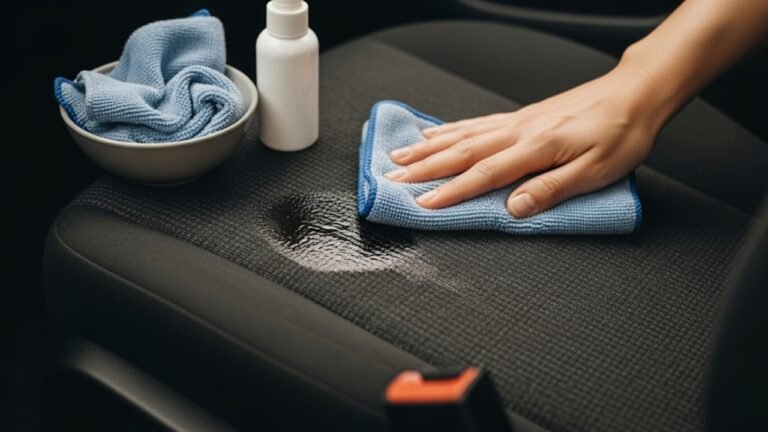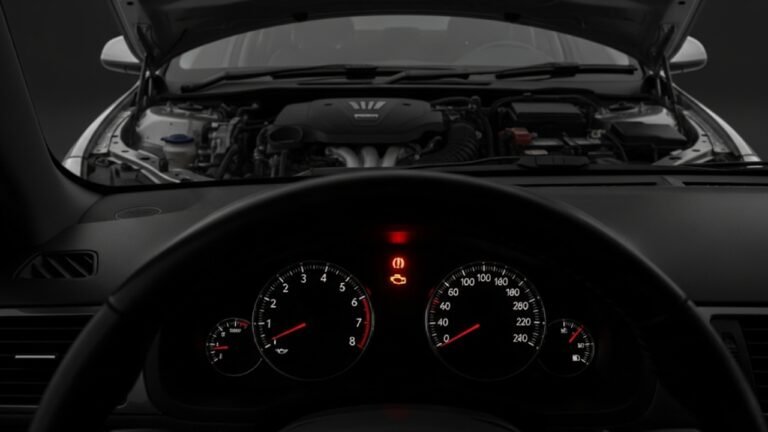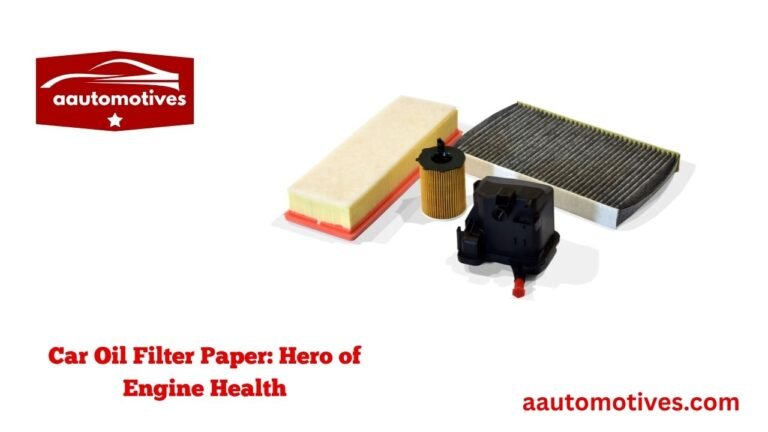Where Do You Put Motor Oil in a Car?

Imagine your car as a living body. Its heart is the engine. And just like your heart needs blood, your engine needs motor oil. Without it, everything stops. Things grind, heat up, and break. It’s not dramatic—it’s just reality.
Now, here’s a common moment: You’re standing in front of your open car hood, holding a fresh bottle of oil and asking, “Where do you put motor oil in a car?” Don’t worry. You’re not alone. Most drivers have been there. I’ve been there too.
This guide isn’t about being a mechanic. It’s about helping everyday people like us care for our vehicles without feeling lost or overwhelmed. I’ll show you exactly where to put motor oil in a car, what to look for, what to avoid, and how to do it safely. It’s easier than you think.
Let’s dive in.
Opening the Hood: Your First Step into the Engine Bay
To start, you need to pop the hood. This sounds basic, but it’s where a lot of people hesitate. Find the hood release lever—usually near the driver’s side footwell or under the dash. Pull it, and you’ll hear a soft click. Then, walk to the front of the car and lift the hood.
You’ll likely need to push a secondary latch under the hood’s edge. It’s a little metal lever—slide it sideways or upward to release the hood fully. Use the metal rod or strut to keep the hood open unless your car has gas struts.
Once the hood is up, take a breath. The engine bay might look complicated, but you only need to focus on a few key parts.
Spotting the Oil Cap: What It Looks Like and Where to Find It
Here’s the moment of truth: Where do you put motor oil in a car?
Look for a cap labeled “OIL” or with an oil can symbol on it. This is where the new oil goes in. It’s usually on top of the engine and easy to reach. The oil cap is often black or yellow, and sometimes it even has “SAE 5W-30” or another oil type printed on it.
Helpful Tip: Don’t confuse the oil cap with the transmission or coolant caps. The oil cap is usually smaller and doesn’t have warning labels about pressure or danger.
In most sedans and SUVs, the oil cap is located in the center or slightly to the right of the engine block. It may sit on a metallic or plastic engine cover.
Step-by-Step: How to Add Motor Oil to Your Car
Once you’ve found the oil cap, you’re ready to pour. But wait—there’s a bit more to know.
Here’s a simple 5-step process:
- Check the oil level using the dipstick (we’ll go over this below).
- Make sure your engine is cool before adding oil.
- Remove the oil cap by twisting it counterclockwise.
- Use a funnel to avoid spills (unless you’ve got surgeon-level hand control).
- Pour a little at a time—usually half a quart, then check the level again.
Don’t overfill. It’s like putting too much water in a bottle—it’ll overflow, and in this case, can damage your engine.
The Dipstick: Your Engine’s Honesty Checker
You’ve probably heard of the dipstick, but what does it really do? The dipstick tells you how much oil is currently in your engine. It’s usually a long, thin metal rod with a loop handle, often orange, yellow, or red.
How to read your dipstick:
- Pull it out and wipe it clean with a paper towel.
- Reinsert it all the way.
- Pull it out again and look at the tip.
There will be two marks—“L” and “F” or two dots/lines. If the oil level is below the bottom mark, you need to add oil. If it’s between the marks, you’re good.
Checking the dipstick before pouring oil avoids overfilling—a mistake many people make. Overfilling can lead to frothy oil, leaks, or engine misfires.
How Much Oil Should You Add? Know Your Engine
Every engine has its own oil capacity, usually between 4 to 6 quarts. But you don’t have to pour all that in yourself unless you’re doing a full oil change. If you’re just topping up, you’ll rarely need more than half to one quart.
You can find your car’s exact oil capacity in the owner’s manual or by checking online using your car’s make, model, and year.
Here’s a quick reference table:
| Car Type | Typical Oil Capacity |
|---|---|
| Compact Sedan | 4.0 – 4.5 quarts |
| Mid-size Sedan | 4.5 – 5.0 quarts |
| SUV / Crossover | 5.0 – 6.0 quarts |
| Truck / V8 Engine | 6.0 – 8.0 quarts |
Warning: Never guess! Too much or too little oil is bad. Always use the dipstick to double-check.
Personal Story: My First Time Topping Off Oil
I still remember the first time I asked, “Where do you put motor oil in a car?” I was driving an old Honda Civic. I noticed the oil light flicker during a long trip. I pulled over nervously at a gas station, popped the hood, and had no clue what to do next.
A kind stranger showed me the oil cap and handed me a quart of 10W-30. “Pour slowly,” he said, “and check that dipstick. You don’t want to overdo it.” That advice stuck with me. Since then, I’ve helped dozens of friends learn the same thing.
That moment taught me how relatable and universal this simple maintenance step is. It’s not just about engines—it’s about being in control and feeling confident.
Don’t Mix Oil Types Unless You Have To
When topping off oil, try to match the same oil grade and type already in your engine. Mixing different oil viscosities (like 5W-30 with 10W-40) isn’t the end of the world in emergencies, but it’s not ideal.
If you’re unsure what type of motor oil your car needs:
- Check the owner’s manual
- Look at the label on the oil cap
- Search online with your car’s year, make, and model
Common oil types:
| Viscosity Grade | Best For |
|---|---|
| 5W-30 | Most modern gasoline engines |
| 0W-20 | Hybrids and new vehicles |
| 10W-40 | Older engines / hot climates |
Using the wrong oil can cause poor fuel economy, wear and tear, or even overheating. So it’s worth double-checking.
Signs You Need to Add Motor Oil
Your car won’t always shout for help, but it whispers. Watch for these warning signs that your oil might be low:
- Oil warning light or check engine light
- Ticking or knocking noises from the engine
- Rough idling or sluggish acceleration
- Burning oil smell or smoke from the tailpipe
- Visibly low level on the dipstick
If you notice any of these signs, stop and check the oil immediately. It’s your engine asking for help.
Mistakes to Avoid When Adding Motor Oil
Let’s be real—everyone makes mistakes, especially the first time. But when it comes to your engine, small errors can lead to big consequences. Here are a few common mistakes to steer clear of when adding motor oil to your car:
- Overfilling: This is the most common mistake. Overfilled oil creates air bubbles, which can reduce lubrication and cause damage.
- Pouring into the wrong hole: Yep, it happens. The oil cap is different from the coolant or brake fluid caps. Always check the label.
- Forgetting to replace the oil cap: If you forget to screw the cap back on, oil will splash out, creating a mess and possible engine fire risk.
- Adding oil when the engine is hot: This can cause burns and won’t give you an accurate dipstick reading.
Take your time. Think of it like cooking—measure, pour, and taste (okay, maybe don’t taste this one).
Understanding the Role of Motor Oil
So, why is motor oil so important anyway? Well, it’s not just “juice for your engine.” Think of oil as a protective barrier, a heat sponge, and a cleaner—all rolled into one.
Here’s what motor oil actually does inside your engine:
- Lubricates moving parts so they don’t grind against each other.
- Cools down components by reducing friction.
- Cleans out debris and carbon build-up through detergents.
- Prevents corrosion by coating metal surfaces.
- Seals gaps between the piston rings and cylinder walls.
Without oil, your engine turns into a giant block of heat, metal, and failure. With the right oil level, it becomes smooth, efficient, and long-lasting.
How Often Should You Check Your Oil?
You don’t need to be under the hood every day, but checking your oil regularly is one of the easiest ways to keep your car running right.
Here’s a good routine:
- Monthly oil check (especially if your car is older than 5 years)
- Before any long trip
- Every time you get gas (some people find this convenient)
- When seasons change, especially before summer and winter
If your car has an oil life monitoring system, you’ll get alerts. But even then, a visual check now and then gives peace of mind.
Synthetic vs. Conventional Motor Oil
When you walk into a store, you’ll see a wall of different motor oils. Some say synthetic, others say conventional, and prices vary wildly. So what’s the difference?
| Type of Oil | Best For | Pros | Cons |
|---|---|---|---|
| Synthetic Oil | Newer engines, turbocharged or high-performance | Better performance, lasts longer | More expensive |
| Conventional Oil | Older cars or normal driving conditions | Cheaper, widely available | Needs frequent changing |
| Blend Oil | A mix of both | Balanced performance and price | Not ideal for extremes |
If you’re unsure, always go with what your owner’s manual says. Matching the oil to your car is more important than brand loyalty.
Relatable Anecdote: Helping a Friend on a Road Trip
Let me share another quick story. A few years ago, my friend Lisa and I were driving cross-country. Somewhere in Nebraska, her oil light popped on. She panicked. I remembered what I had learned and pulled over at the next gas station.
We checked the dipstick—barely any oil. The clerk helped us find the right bottle, and I showed Lisa where to put the oil. I poured half a quart, checked the stick again, and topped it off just right. She was amazed. “That’s it?” she said. “That’s all it takes?” Yep.
It was a moment of bonding—and proof that these little bits of knowledge are empowering.
What Happens If You Don’t Add Motor Oil?
If your engine runs low or dry on oil, the results are ugly and expensive. No exaggeration. Here’s what happens if you ignore the oil warning:
- Friction skyrockets: Metal-on-metal grinding causes heat.
- Engine overheats: Without oil to carry away heat, parts swell.
- Parts warp or break: Pistons, camshafts, and crankshafts can seize.
- Total engine failure: Your car stops running and may need a new engine.
Think of motor oil like oxygen to fire—it keeps things going. Without it, the fire dies. Fast.
Where Do You Put Motor Oil in a Car: Quick Recap
To wrap up the practical steps, here’s a bullet-point summary:
- Park on level ground and let the engine cool.
- Open the hood and find the oil cap (marked “OIL”).
- Remove the dipstick, clean it, and reinsert to check current level.
- Use a funnel to pour oil through the oil cap opening.
- Add small amounts, checking the dipstick after each pour.
- Do not overfill. Keep level between the two dipstick marks.
- Replace the cap tightly and wipe any spilled oil.
- Dispose of any empty bottles or rags responsibly.
This simple routine takes less than 10 minutes once you know how.
FAQs: Common Questions About Putting Motor Oil in a Car
1. Can I add oil without changing it?
Yes, absolutely. Topping off your oil is normal between oil changes, especially in older engines. Just make sure not to overfill.
2. What if I put in too much oil?
Drain some out using the oil plug or visit a mechanic. Too much oil can cause foaming, leaks, or engine damage.
3. How do I know what type of motor oil to use?
Check your owner’s manual, the oil cap, or look up your vehicle’s specs online using make, model, and year.
4. Can I drive right after adding oil?
Yes, as long as you’ve checked the dipstick and the oil level is in the safe range. Let the oil settle for a minute or two first.
5. What if the oil warning light stays on after adding oil?
It could be an issue with the oil pressure sensor or oil pump. If the level is fine but the light remains, get it checked professionally.
6. Should the engine be hot or cold when checking oil?
Check it when the engine is cool or after sitting off for 10–15 minutes. Hot engines can give false readings.
7. Is synthetic oil better for every car?
Not necessarily. Use what’s recommended by the manufacturer. Synthetic oil lasts longer, but isn’t always needed.
8. Can I use any funnel to pour oil?
Yes, but using a clean, narrow funnel helps avoid spills. Don’t reuse funnels that had other fluids in them (coolant, fuel, etc.).
Conclusion: Your Engine Will Thank You
Knowing where to put motor oil in a car is more than just a mechanical skill—it’s a basic act of care. Like feeding a pet or watering a plant, it’s about maintenance, love, and keeping things running smoothly.
You don’t need to be a mechanic. You just need a little patience, the right tools, and the willingness to learn. And the next time someone asks you, “Where do you put motor oil in a car?”—you’ll not only know the answer, you might just be the one helping them figure it out.
So open that hood. Check the stick. Pour with care. And enjoy the smooth, quiet hum of a well-oiled engine.






